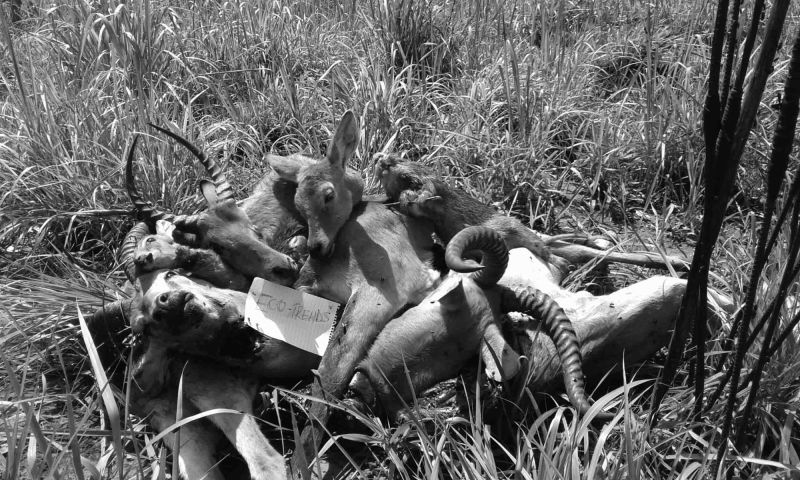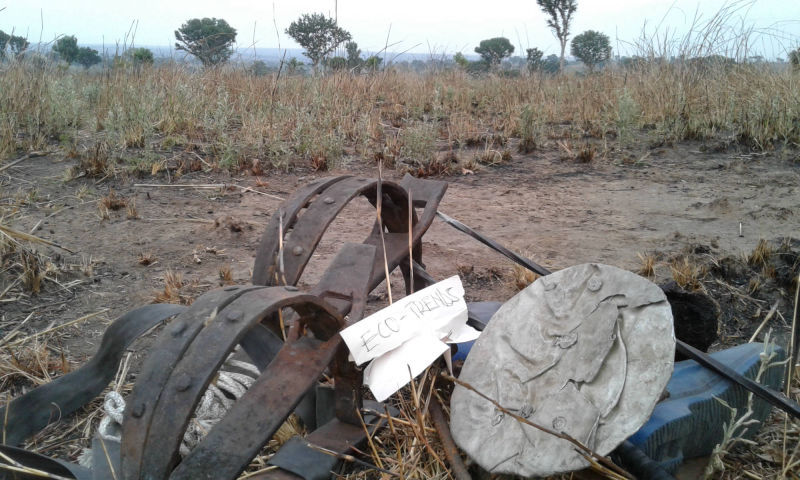 Confiscated Antelope and Bush Buck Carcasses
Confiscated Antelope and Bush Buck Carcasses Confiscated game traps
Confiscated game trapsMurchison Falls Protected Area is Uganda’s largest Protected Area and is afforded the highest category of protection in Uganda. According to Plumtre et al (2015) MFPA is rich in species and biodiversity with a total known list of 144 mammal species, 556 bird species, 51 reptile species, 28 known amphibian species with an additional 23 to identify (51 species), and 755 plant species.
The same area has also been discovered to hold substantial quantity of Oil and Gas. Total E & P Uganda has been given production licence for this block. These development activities in the MFNP may create disturbances which may increase animal movements out the project area and potentially out of the Park looking for alternative resources. It has been argued that the current mitigation measures on bush meat hunting seem not to perfectly address the issue. This is confounded by the love of bush meat by the people neighbouring the National Park and the outside markets.
The main objective of the project is to understand the underlying issues around bush meat in relation to conservation and development. The intervention funded by Total E&P spanning a period of 3 years strives to get back the missing strategy in bush meat hunting mitigation in and around Murchison Falls National Park and the wider markets in the North and North Western Uganda. Specifically, the project looks at:
1. Identifying the principal types of Bushmeat hunting that occur in the vicinity of the Project and conduct a broad categorisation
2. Carrying out sensitisation and awareness campaigns within the neighbouring communities to change attitudes and behaviour towards wildlife and bush meat hunting.
3. Building on existing partnerships and where there are gaps develop new sustainable partnerships with the communities and other stakeholders in the area.
Originally, across Africa the bush meat conflict was taken in isolation, controlled by use of force and in an up-down management approach. The approach was later changed to community conservation which looked at working through the communities to address the vice. The project is understanding the intricacies and proposing the mitigation measures. This is therefore the gist of this implementation and it aims at addressing the key issues to community conservation.
In the long term, the project aims to implement a phase-wise approach starting with a pre intervention surveys and awareness, followed by developmental and livelihood projects. To sustain the campaign, a link to the Community Wildlife Club (CWCs) methodology will be sought.